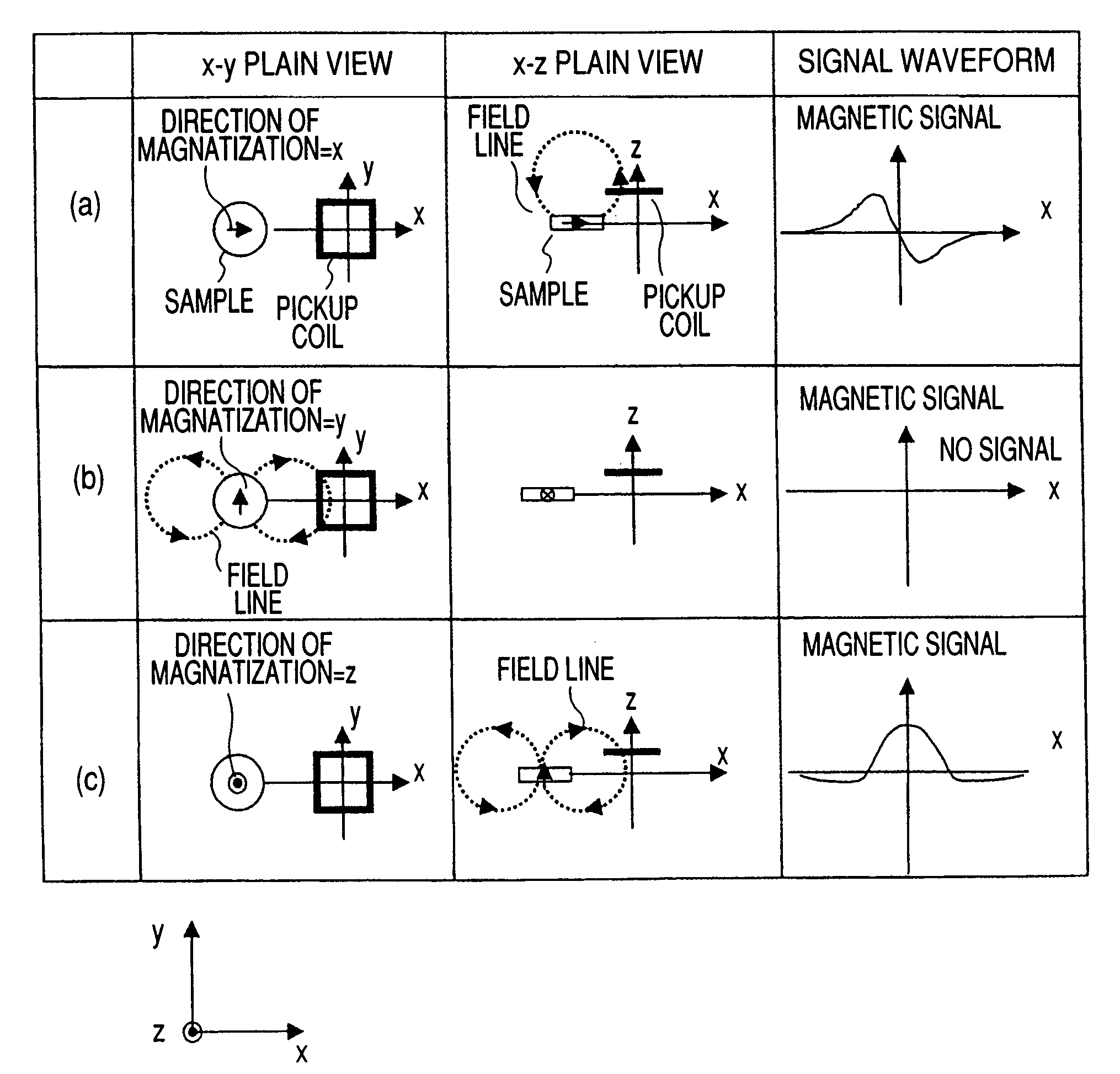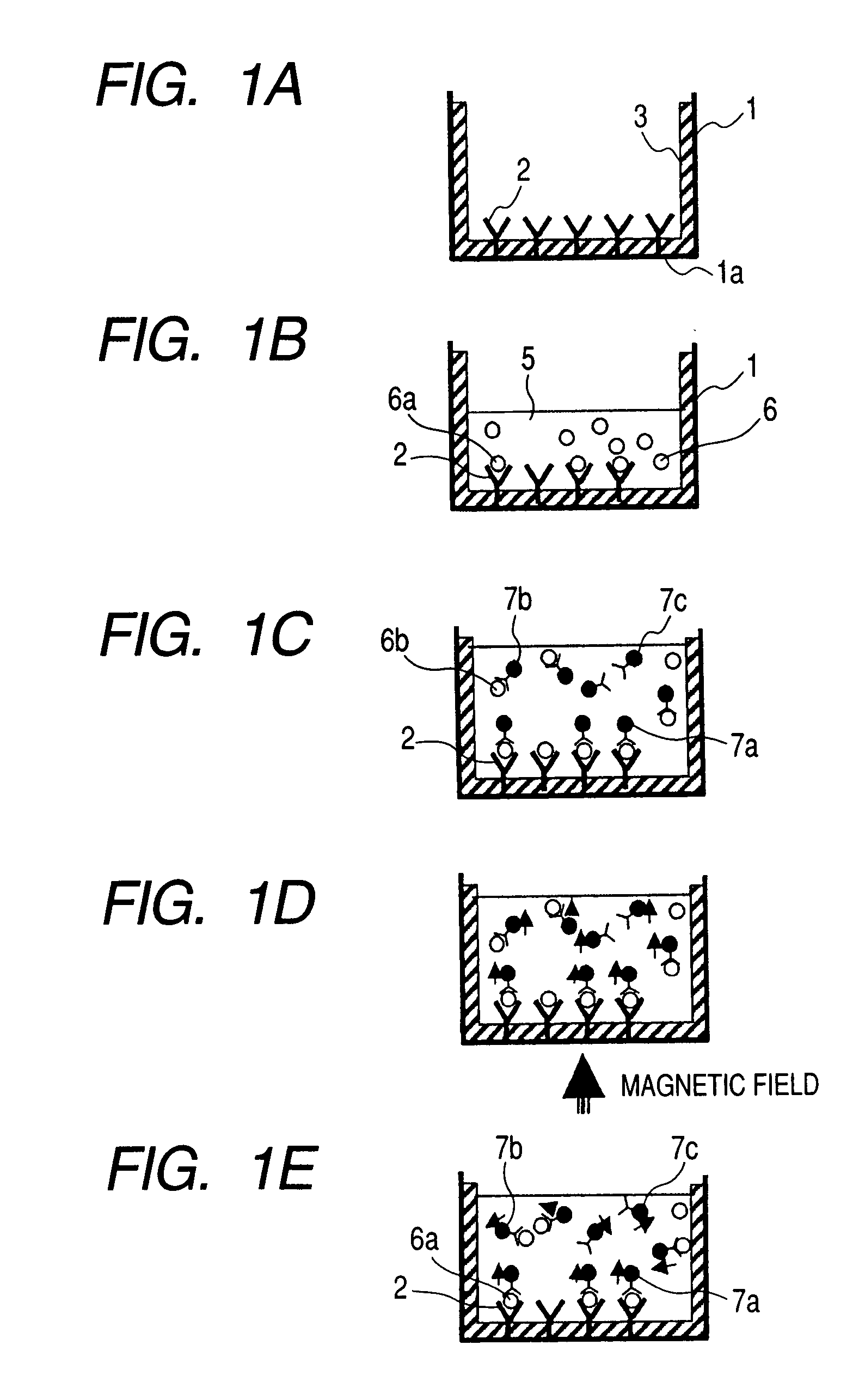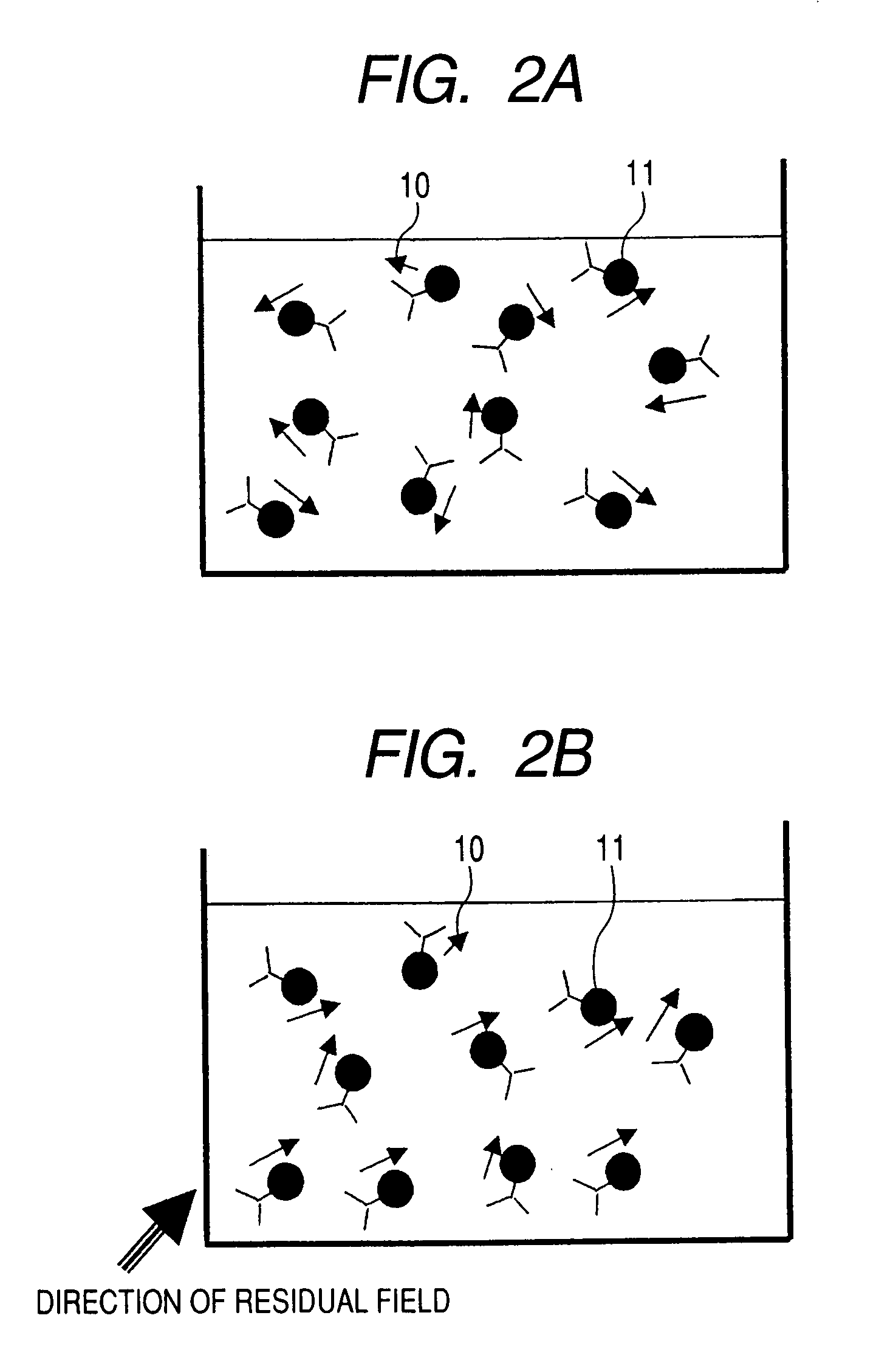Magnetic immunoassay system
a magnetic immunoassay and immunoassay technology, applied in the field of magnetic immunoassay systems, can solve the problems of increasing the minimum detection limit, reducing the signal-to-noise ratio, and unable to completely reduce the magnetic field to zero, so as to achieve high immunoassay sensitivity, eliminate the effect of magnetic signals, and easy isolating signals
- Summary
- Abstract
- Description
- Claims
- Application Information
AI Technical Summary
Benefits of technology
Problems solved by technology
Method used
Image
Examples
first embodiment
[0059] The following description utilizes antibodies labeled with magnetic nanoparticles (magnetic markers) containing residual magnetic signals, and the description of the embodiment of this invention utilizes a magnetic immunoassay system for detecting magnetic signals from a sample reacting with a test reagent in a first-order planar SQUID gradiometer as an example. The following disclosure is nothing more than an embodiment of this invention, and does not limit the technical scope of this invention.
[0060]FIG. 5 is a cross sectional view showing the structure of the first-order gradiometer SQUID of the first embodiment of this invention. In order to reduce the input of magnetic environmental noise into the SQUID, the cooler device (made up of an outer tank 21, a vacuum layer for thermal insulation 22 and inner tank 23) for cooling the SQUID is enclosed by an RF shield 19 and magnetic shields 30, 31. The RF shield 19 is made from metal material with low electrical resistance such...
second embodiment
[0075] An example of the second embodiment is described utilizing a magnetic immunoassay system for detecting magnetic signals from a sample that reacted with a test reagent in a first-order planar SQUID gradiometer, using antibodies labeled with magnetic nanoparticles having remanence.
[0076]FIG. 13 is a cross sectional view showing the structure of the magnetic immunoassay system of the second embodiment. A permanent magnet 18 and a position adjuster 20 for the permanent magnet are installed instead of the compensation coil 16 for the system used in the first embodiment shown in FIG. 5. The permanent magnet 18 applies a magnetic field in a direction perpendicular to the magnetization direction (z direction) of the bound magnetic marker at the measurement position. The other parts of the structure are identical to the first embodiment.
[0077] A sample identical to that for the first embodiment was measured using this system. The method for making the samples was identical to that o...
third embodiment
[0079] An example of the third embodiment is described utilizing a magnetic immunoassay system for detecting magnetic signals from a sample that reacted with a test reagent in a first-order planar SQUID gradiometer, using antibodies labeled with magnetic nanoparticles having remanence.
[0080]FIG. 15 is a cross sectional view showing the structure of the system. The system utilizes a dual layer cylindrical magnetic shield made from a cylindrical magnetic shield 43 with an inner diameter of 40 centimeters and length of 1 meter, and a cylindrical magnetic shield 44 with an inner diameter of 30 centimeters and length of 90 centimeters. The shield 43 and 44 material is 2 millimeter thick permalloy. A sample container 45 is a non-magnetic reaction chamber with an 8 by 12 array of 96 holes. The sample container 45 is supported by a sample container holder 47 so that the measurement position is at the center of the magnetic shield, and a 3-axis manipulator 48 moves the desired sample to the...
PUM
| Property | Measurement | Unit |
|---|---|---|
| magnetic field | aaaaa | aaaaa |
| magnetic field | aaaaa | aaaaa |
| electrical current | aaaaa | aaaaa |
Abstract
Description
Claims
Application Information
 Login to View More
Login to View More - R&D
- Intellectual Property
- Life Sciences
- Materials
- Tech Scout
- Unparalleled Data Quality
- Higher Quality Content
- 60% Fewer Hallucinations
Browse by: Latest US Patents, China's latest patents, Technical Efficacy Thesaurus, Application Domain, Technology Topic, Popular Technical Reports.
© 2025 PatSnap. All rights reserved.Legal|Privacy policy|Modern Slavery Act Transparency Statement|Sitemap|About US| Contact US: help@patsnap.com



